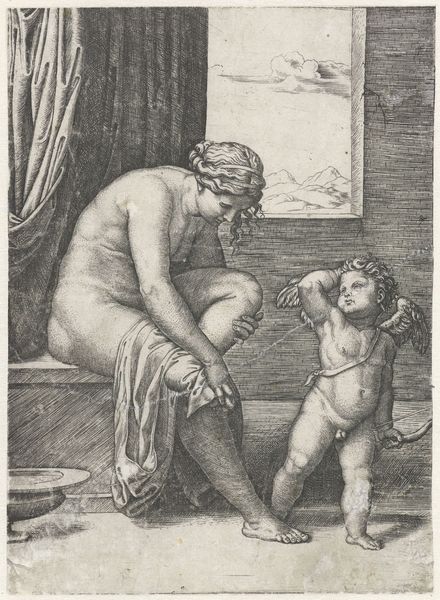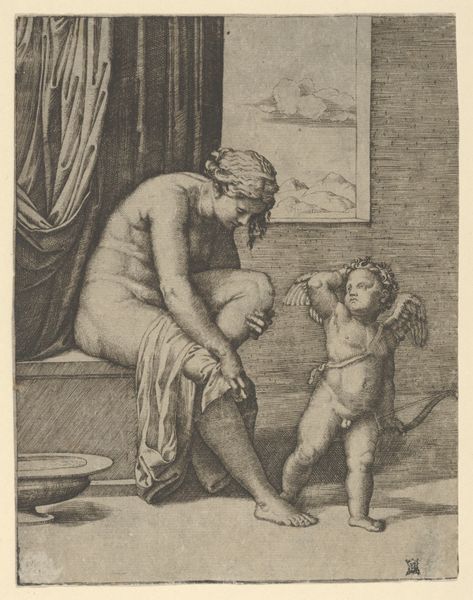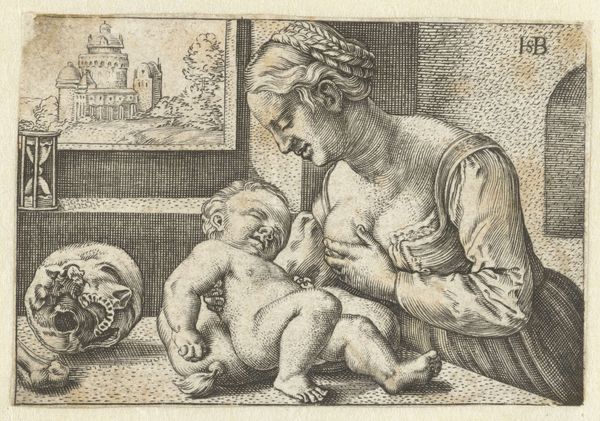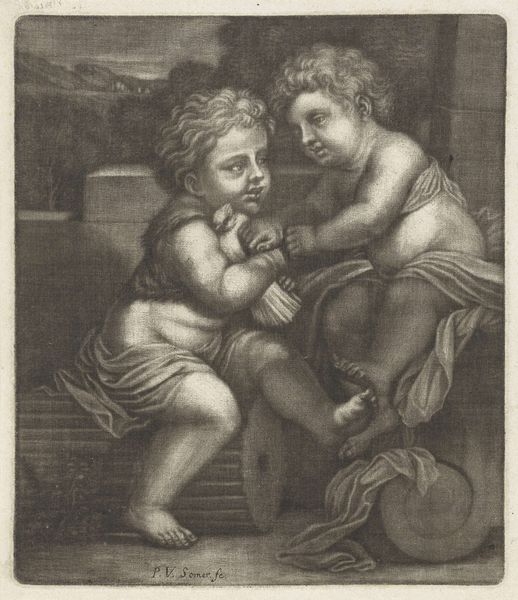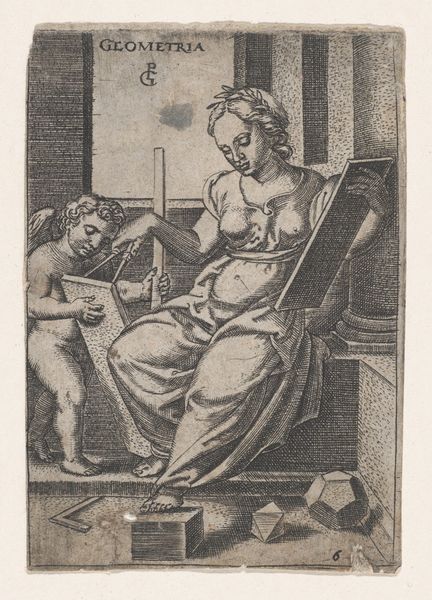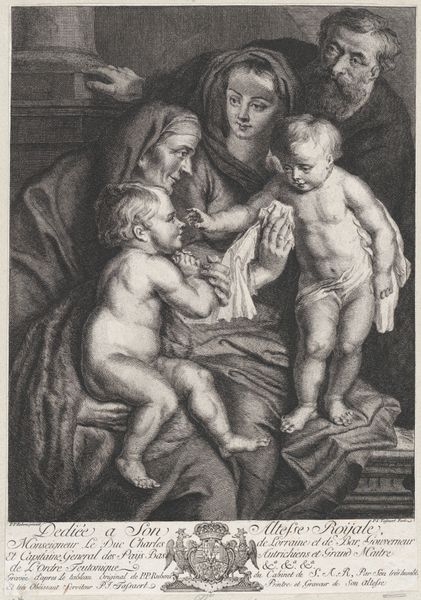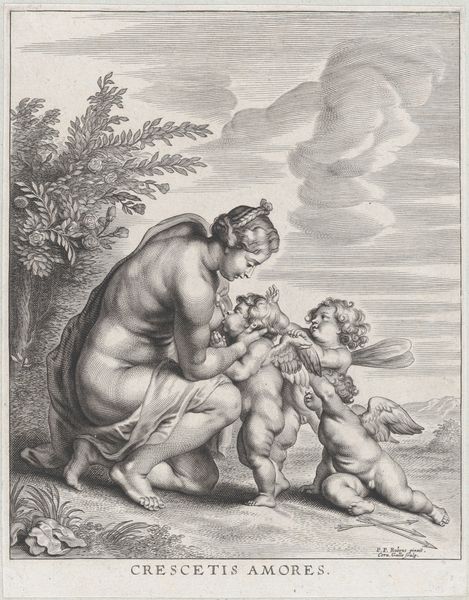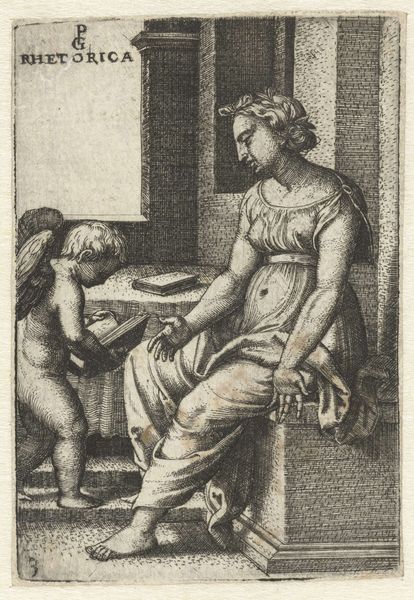
#
pencil drawn
#
toned paper
#
light pencil work
#
pencil sketch
#
charcoal drawing
#
charcoal art
#
personal sketchbook
#
portrait reference
#
pencil drawing
#
portrait drawing
Dimensions: height 164 mm, width 132 mm
Copyright: Rijks Museum: Open Domain
This engraving of Venus after her bath was made around 1600 by the Flemish artist, Wierix. It presents a classical subject, but also shows us how the institutions of art shaped the production and reception of images. The visual codes are rooted in classical antiquity. Venus, the goddess of love, is accompanied by Cupid, her son. But the image would have had a particular resonance for a 17th-century audience in the Netherlands. This was a society in which the display of nudity in art was highly contested. The Dutch Republic was in the throes of its 'Golden Age', with debates raging about the morality of wealth and the public role of art. Was this engraving an endorsement of sensuality, or a moralising tale about the dangers of vanity? As historians, we can draw on a range of resources to help us understand its meaning: studies of the classical tradition, the history of the print market, and records of religious debates in the Dutch Republic. This helps us to understand art not as something timeless, but as contingent on its social and institutional context.
Comments
No comments
Be the first to comment and join the conversation on the ultimate creative platform.
